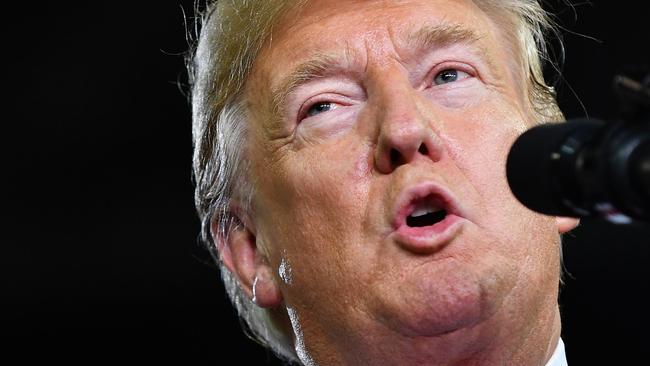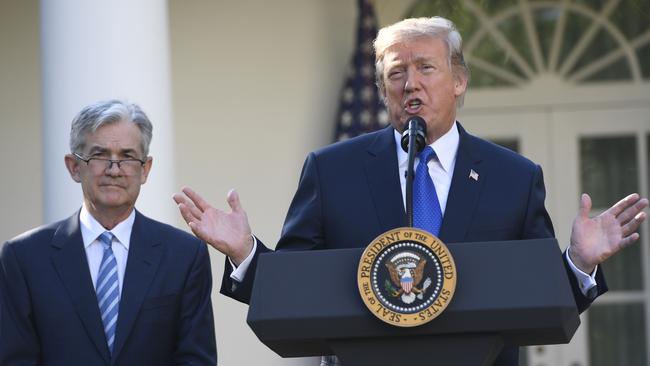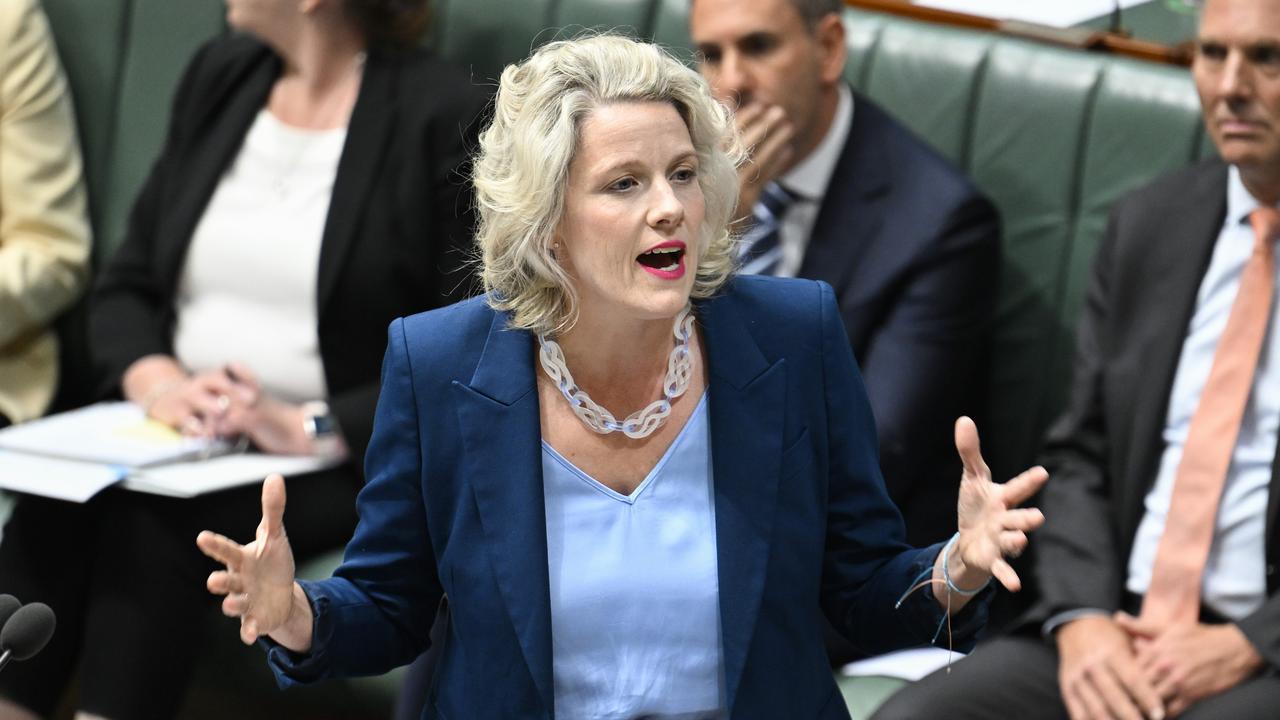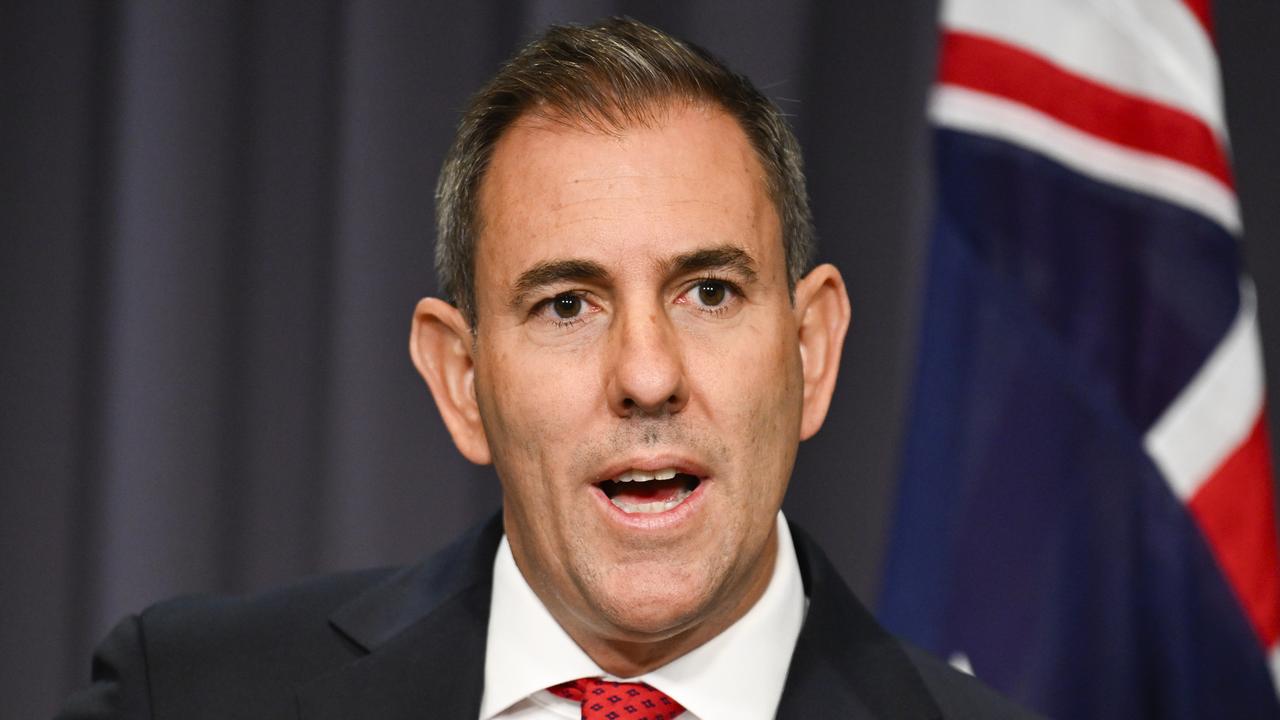Donald Trump calls Fed ‘crazy’ after rates aid Wall St sell-off
Donald Trump has for the first time blamed the US Fed for market losses, saying it’s “making a mistake” on rates.

President Donald Trump put the Federal Reserve at the middle of the stockmarket sell-off just minutes after the White House issued a statement playing down the drop by pointing to solid economic fundamentals.
“The Fed is making a mistake,” Mr Trump told reporters in Erie, Pennsylvania, after stock markets suffered their biggest decline in more than seven months. “I think the Fed has gone crazy.”
Mr Trump has for weeks grumbled about the central bank’s campaign to gradually lift short-term rates, which the Fed has been doing to guard against inflation and economic overheating.
Today’s comments were the first time he said the Fed had been responsible for inflicting market losses.
Of the stock market, he said: “Actually, it’s a correction that we’ve been waiting for, for a long time. But I really disagree with what the Fed is doing, OK?”
Wall Street sank more than 3 per cent in a sell-off sparked in part by a recent jump in government bond yields and the Federal Reserve’s bid to tighten monetary policy.
The Fed has raised its benchmark short-term interest rate three times this year, most recently last month by a quarter-percentage-point to a range between 2 per cent and 2.25 per cent. Officials have indicated they expect another percentage point in rate increases will be needed to keep the economy on an even keel through 2019.
IMF chief Christine Lagarde defended central bank rate hikes, calling them a “necessary development”.
“It is clearly a necessary development for those economies that are showing much improved growth, inflation rising, unemploymentextremely low,” Ms Lagarde said in Bali. “It’s inevitable.”
Earlier, the White House said in a statement that the “fundamentals and future of the US economy remain incredibly strong,” and ticked off positive news on employment and other measures.
Mr Trump has regularly pointed to the stock market’s gains as validation of his economic policies.
A Fed spokeswoman declined to comment.
Fed chairman Jerome Powell said last week the Fed’s nine-person rate-setting committee is guided solely by its reading of economic data when it fashions a consensus around where to set its policy rate. “This is just who we are and, I think, who we’ll always be,” he said, dismissing concerns that politics would enter into officials’ decision-making.

Expectations of stronger growth are one reason why stock investors have followed bond markets in realigning their expectations for how much further the Federal Reserve will raise interest rates.
The Fed will go further than previously expected, investors increasingly believe, though expectations for policy inside the Fed itself haven’t notably shifted in recent weeks.
Bond markets slumped last week, sending up yields on long-term Treasury bonds, after a string of strong economic data provided firmer evidence that the Fed could continue to raise rates.
An increased supply of Treasury debt, stemming from a rising federal budget deficit, is another reason analysts say yields have moved higher this year. Last week, yields on the benchmark 10-year Treasury climbed to their highest levels since May 2011 as investors took more seriously the prospect of future rate increases amid stronger economic growth.
For most of the last two years, investors have generally expected fewer increases in short-term rates than those signalled in quarterly projections by central bank officials themselves.
When the Fed raises rates, it is trying to influence financial conditions -- as reflected in the values of stocks, bonds, currencies, real estate and other assets. Until recently, these conditions have remained easy, making stocks and bonds more valuable, even though the Fed began to raise short-term interest rates three years ago.
The 10-year yield, which incorporates expectations for interest rates, inflation, economic growth and other factors, rose to 3.227 per cent last Friday, a seven-year high, as investors began to anticipate that the Fed would deliver on more rate increases.
“There is a repricing going on. It is not that big,” said Roberto Perli, an analyst at Cornerstone Macro.
Overnight, it was the stock market’s turn to adjust its expectations. “There is a lagged acceptance of the Fed’s certainty that they can get to 3.25 per cent without slowing the economy,” said Jim Vogel, an interest-rate strategist at FTN Financial.
Fed officials haven’t telegraphed changes to their rate strategy in recent days, but they have reinforced their plans to continue raising rates.
Last week, Fed chairman Jerome Powell observed that the central bank “probably” had a “long way” to go before its benchmark short-term interest rate could be considered neutral -- meaning that it is neither so low that it is spurring very fast growth or so high that it is slowing growth down. His suggestion that it was a long way from neutral could be taken as a sign he sees more rate increases to come, though several Fed analysts said markets had overreacted to his comment.
Then overnight, New York Fed President John Williams said he believed the central bank’s current quarterly path of rate increases would reach such a neutral setting in “the next year or so,” another indication of more rate increases to come.
The comments helped to dismantle market speculation that had crept in this summer about the potential for the central bank to pause from its rate-raising campaign earlier than mid-2019.
One important factor for the Fed will be the behaviour of inflation in the months ahead. A shortfall of inflation could spur the Fed to slow its campaign, but inflation near or above the Fed’s 2 per cent target could encourage officials to keep going in an environment of very low unemployment.
It also isn’t clear how the Fed will respond once it gets to a neutral rate setting of around 3 per cent or a bit higher. Typically, the Fed has lifted the rates higher than neutral in a fast-growing economy to prevent it from overheating. If inflation and asset prices are modest, the Fed could stop near neutral.
Dow Jones Newswires



